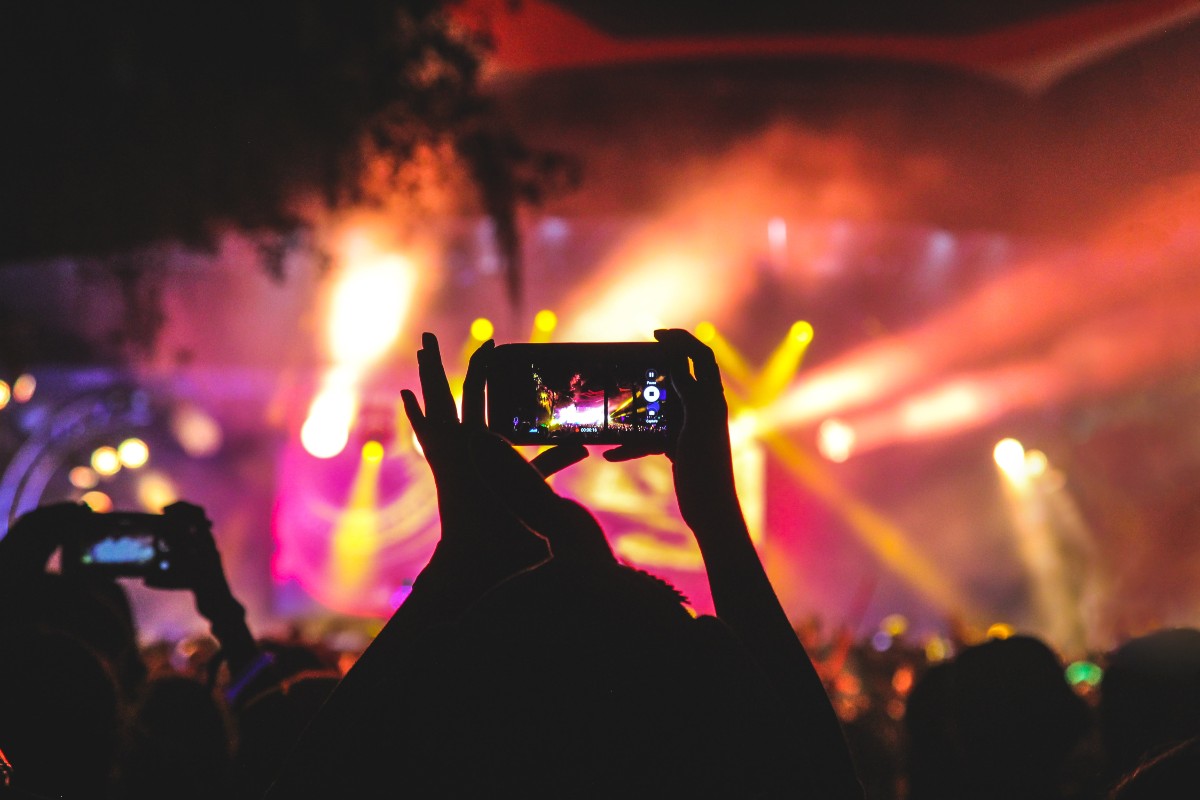You went to an online event last year.
Instead of walking through the doors of a venue, you logged into your account. You hopped between stages without the walking commute. And, you experienced what it was like to meet new people virtually.
Online events had the ultimate beta test during 2020.
Now that in-person events are opening up again, the question is—are we leaving all that new adoption behind?
The answer is no. Online events taught event planners what was needed to hold an engaging virtual experience. Just as importantly, it taught participants how to go to an online event and what to expect from the brand experience.
This has created a new choice when buying tickets. Do people want to go to the in-person event or just have the online experience?
The rise of hybrid experiences is here.
The Benefits of Hybrid Experiences
Hybrid experiences are in-person and online events. It’s an event that can be streamed and attended. Markletic reports, “86% of B2B organizations see a positive ROI of their hybrid events 7 months after the event date.” The adoption of online events has led conferences, concerts, and shows to have two options:
- Come to the in-person event
- Join the virtual event
The benefits of hybrid experiences push two ticket types towards becoming the new norm.
Benefit #1: Access To More Talent
Just like a remote team has access to more talent than a location-dependent team does, hybrid experiences have the same potential. Conferences can invite guests who would normally be unable to take time out of their schedules to fly across the world for their interview. Concerts can bring together talent from across the globe without worrying about COVID-19 restrictions, visas, or schedules. Shows can honor guests without needing the guest to even be in the venue.
Hybrid experiences relieve restrictions necessary for strictly in-person events.
Benefit #2: Inclusivity
The two types of tickets (in-person and online) for hybrid events come with a vast price difference. To join the in-person event can cost $2,000 but to join online could be $50. This price difference allows people who couldn’t have afforded the price of the ticket and the cost of travel to the event to still be able to join. Forty-seven percent (47%) of event organizers say hybrid events help them bring together a global audience. This inclusivity will compound as more hybrid experiences become available and people previously unable to attend get to have their first, second, third, and tenth hybrid experience.
Hybrid experiences open a new wave of inclusivity that allows for more people to join an experience, despite economics and location.
Benefit #3: Extra Offers
By adding an online component to a normally in-person experience, the opportunity for new offers arises. Event coordinators can offer new products based on the online experience. For example, with the online experience being recorded for online ticket holders—the online experience can be sold to in-person ticket holders (so they can watch the experience again). Online ticket holders can also be upsold with special offers like recordings, notes, meet and greets, etc.
Hybrid experiences create new products that can be turned into upsells and offers.
Here are examples of hybrid events, how their tickets are structured, and who their ideal attendee is.
What Do Hybrid Experiences Look Like Today?
Hybrid experiences are the new normal. With technology adoption higher than ever before, holding a virtual event alongside an in-person event just makes sense.
The Wonder Women Tech National Conference knows this. Their hybrid national conference has two ticket options:
- Join in-person at the Long Beach Convention Center
- Watch virtually and get access to workshops, mentor sessions, speaker series, networking, and a career fair
On a small scale, hybrid events are being used by entrepreneurs like chess teacher Sam. Sam teaches chess in-person every Thursday night at the Washington Library Park in Providence, Rhode Island.
He also sets up Zoom so his students can join virtually:
On a larger scale, there are hybrid experiences we’ve become used to seeing. The Oscars, The Emmy Awards, and The Grammy Awards are just a few hybrid events that have had an in-person ticket and a free “ticket” for everyone watching on TV or streaming online. The difference now is in their in-person experience. In the past, if a guest wasn’t able to attend in-person they weren’t usually part of the ceremony.
Today, famous guests can join the event online and it’s normal. The Pre-Grammy Virtual Gala in 2021 had stars like Alicia Keys, John Legend, and Jamie Foxx.
User-Generated Content and Employee-Generated Content Are a Huge Part of Hybrid Experiences
User-generated content (UGC) is a photo, video, testimonial, or feedback from a fan, audience member, or customer. Employee-generated content is created by employees about their employer. UGC and EGC get higher engagement and conversions in direct comparison to brand-created content.
This means that if an attendee of the Wonder Woman in Tech National Conference writes a tweet about her brand experience at the event, it’s more likely to get more likes, retweets, and click-throughs to any links added than a tweet from the conference itself.
Sam will see the same results from his chess students posting about their progress in comparison to his content about his Chess Club.
This tells us the importance of sharing user-generated content and employee-generated content about hybrid events. Here are a few ways to share UGC and EGC before, during and after your event:
- Create a social wall on your website and an in-person digital wall that features moderated UGC from Instagram and Twitter
- Repurpose UGC and EGC across your marketing channels
- Add UGC and EGC to your product pages for higher conversion rates
- Poll your audience before, during, and after your event
How To Get Employees to Create EGC
Getting employees to create EGC doesn’t happen with a one-time ask. Employee advocacy comes from explaining what’s in it for your team, leadership buy-in, and showing your team how their content is helping.
Explain what’s in it for them: Create incentives that promotes employee advocacy so you’re not asking your team for more work—they’re getting something out of creating it.
Leadership buy-in: Leadership has to be creating their own EGC to showcase buy-in and examples of what “great” EGC looks like for your company.
Show them how their content is helping: Keep employees in the loop on how their content has helped launches, products, customer support, etc.
Providing a safe and convenient brand experience for your customers and team to create UGC and EGC is always step one.
The Rise of Hybrid Experiences
After surviving the ultimate beta year (2020), hybrid experiences look like they’re here to stay. With their access to more talent, inclusivity, and ability to add more upsells to events—we see why thirty-four percent (34%) of event organizers plan to invest in hybrid events in the upcoming years.
Creating a hybrid experience involves the right marketing. Marketing based on user-generated content and employee-generated content that can increase your traffic, engagement, and sales.
Want more actionable marketing advice like this? Subscribe to the Future of Marketing to join over 20,000 marketing leaders studying what’s working in marketing today and learn how to take your strategy to the next level.





